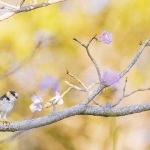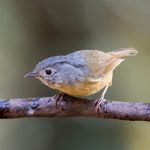Birding shares an inextricable connection to ornithology and taxonomy. Once you endeavor to put a species name to each avian face, the full weight of the Linnean hierarchical naming structure, with its hydra-headed orders, families, and genera, will eventually come crashing down on you. Armed with this collection of the taxonomic tags birders use to reference assorted families of birds, you should find other birders much easier to understand. I’ve published this glossary before, but in the interest of completeness, I’m offering it up for further review.
- alcids – members of the Family Alcidae; auks, auklets, murres, murrelets, puffins, and guillemots
- corvids – members of the Family Corvidae; crows, ravens, jays, and allies
- emberizid – members of the Family Emberizidae; sparrows and juncos
- hirundid – members of the Family Hirundinidae; swallows (seldom used term)
- icterids – members of the Family Icteridae; blackbirds, grackles, orioles, and cowbirds
- larid – Larus genus members of the Family Laridae; gulls (seldom used term)
- parid – members of the Family Paridae, often referred to as tits for legitimate, as opposed to lascivious reasons; chickadees and titmice
- parulids – members of the Family Parulidae; New World wood-warblers
- picids – members of the Family Picidae; woodpeckers and allies (seldom used term)
Not all groups of birds are named for their taxonomic families, a fact for which thrushes and wrens are eternally grateful. Some are referenced under the heading of their order:
- anseriforms – members of the Order Anseriformes; swans, geese, and ducks
- columbiforms – members of the Order Columbiformes; doves and pigeons
- galliforms – members of the Order Galliformes; primarily used to describe chickens, turkeys, quail, pheasants, and grouse, but may also reference rails and other gallinaceous birds
- passerines – alternately passeriforms, members of the Order Passeriformes, comprising more than half of all known avian species; perching or songbirds
- psittaciforms – alternately psittacids, members of the Order Psittaciformes; parrots, cockatoos, and lorikeets
Last but not least are those colorful monikers and catch-all terms birders use to describe loosely organized avifaunal aggregates:
- goatsuckers – alternately caprimulgids (why bother really?), members of the Family Caprimulgidae; a group of crepuscular birds also known as the nightjars; poorwhills and nighthawks
- peeps – several species of sandpiper of the genus Calidris that are nearly impossible to tell apart; Baird’s, Least, Semipalmated, Western, and White-rumped sandpipers, may also include sanderlings and stints
- pelagics – birds of the open ocean; includes, but is not limited to a variety of alcids, gulls, gannets, skuas, jaegers, tubenoses, and sea ducks
- raptors – soaring birds of prey; eagles, vultures, falcons, hawks (also grouped by genus as buteos and accipiters), and sometimes owls
- trash birds – any common, adaptable species, usually unrelated and often invasive
- tubenoses – members of the Order Procellariiformes, so named for the distinctive tubular structure of their nostrils; shearwaters, fulmars, petrels, prions, albatrosses, storm-petrels, and diving petrels
- tyrant flycatchers – members of the Family Tyrannidae; phoebes, pewees, kingbirds and flycatchers, including the nigh-indistinguishable Empidonax genus flycatchers
- waders – also long-legged waders, encompasses a number of families including herons, egrets, plovers, avocets, stilts, and sandpipers
- waterfowl – swans, geese, ducks, grebes, loons, and perhaps cormorants











Will there be an exam on this?